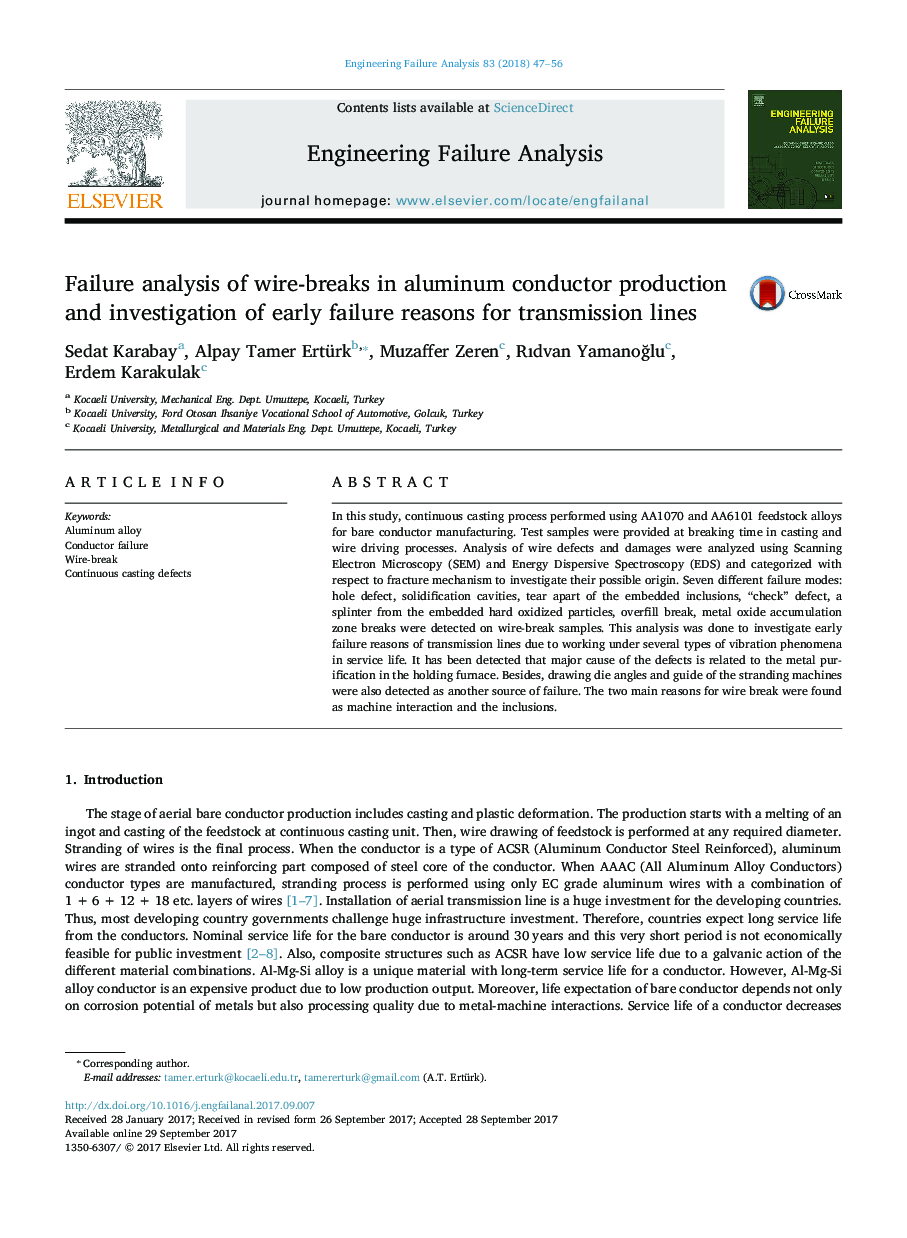| کد مقاله | کد نشریه | سال انتشار | مقاله انگلیسی | نسخه تمام متن |
|---|---|---|---|---|
| 5013431 | 1462943 | 2018 | 10 صفحه PDF | دانلود رایگان |
- Continuous casting process performed using AA1070 and AA6101 feedstock alloys for bare conductor manufacturing.
- Seven different failure modes: hole defect, solidification cavities, tear apart of the embedded inclusions, “check” defect, a splinter from the embedded hard oxidized particles, overfill break, metal oxide accumulation zone breaks were detected on wire-break samples.
- This analysis was done to investigate early failure reasons of transmission lines due to working under several types of vibration phenomena in service life.
- The two main reasons for wire break were found as machine interaction and the inclusions.
In this study, continuous casting process performed using AA1070 and AA6101 feedstock alloys for bare conductor manufacturing. Test samples were provided at breaking time in casting and wire driving processes. Analysis of wire defects and damages were analyzed using Scanning Electron Microscopy (SEM) and Energy Dispersive Spectroscopy (EDS) and categorized with respect to fracture mechanism to investigate their possible origin. Seven different failure modes: hole defect, solidification cavities, tear apart of the embedded inclusions, “check” defect, a splinter from the embedded hard oxidized particles, overfill break, metal oxide accumulation zone breaks were detected on wire-break samples. This analysis was done to investigate early failure reasons of transmission lines due to working under several types of vibration phenomena in service life. It has been detected that major cause of the defects is related to the metal purification in the holding furnace. Besides, drawing die angles and guide of the stranding machines were also detected as another source of failure. The two main reasons for wire break were found as machine interaction and the inclusions.
Journal: Engineering Failure Analysis - Volume 83, January 2018, Pages 47-56
